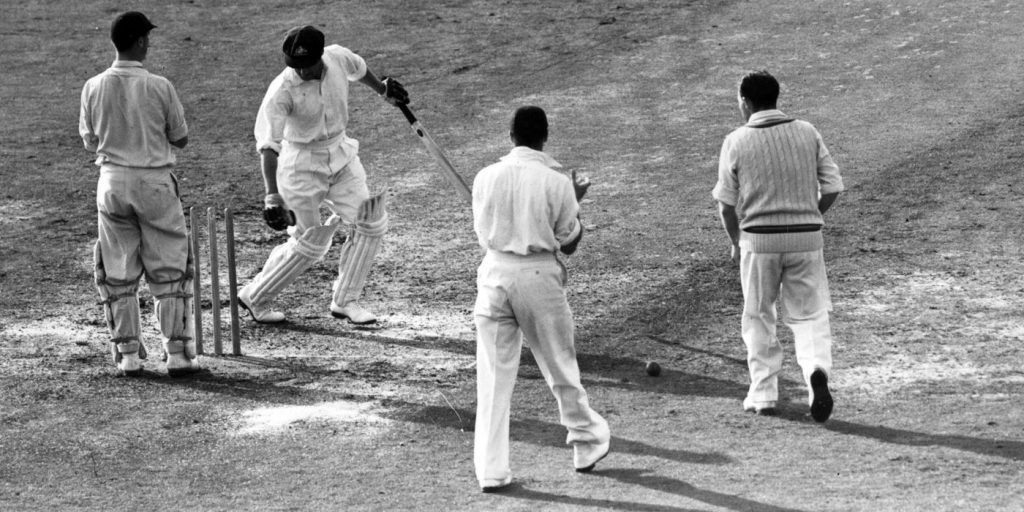OTD 1912 Birth of Eric Hollies the bowler who dismissed Don Bradman for a duck in his last Test

Sir Donald Bradman is arguably the best batter to have played the game and has several batting records to his name. He gave a new dimension and recognition to batting during an era where there were no basic facilities like protective helmets.
However, Bradman’s illustrious career ended on a forgettable note as he bagged a pair in his final Test appearance. The bowler who dismissed him for a duck in that contest was leg-spinner Eric Hollies. While Hollies etched his name in history books, it was on this very day in 1912 that the Englishman was born.
Here’s all you need to know about Eric Hollies
Born on June 5, 1912 in Old Hill Staffordshire. Hollies made his County debut for Warwickshire in 1932 before breaking into the English team in 1935. While the late cricketer did not have the reputation of spinning the ball as much as most leggies, he was known for his accuracy, which helped him in bowling long spells.
Hollies was considered as one of the best bowlers during his prime and it was in 1946 that the legendary spinner took all 10 wickets in an innings against Nottinghamshire without any assistance from the fielders. He achieved this feat on a hard surface, with his dismissals being seven bowled and three LBW. Nonetheless, the record that would make him an overnight sensation was yet to be made.
The following year, Hollies had a slump in form, but he came back strongly in the 1948 Ashes as Australia and England renewed their rivalry and it was on that particular occasion that the leg-spinner bowled the most famous ball of his career, a googly that drew Bradman forward and went on to disturb his furniture.
Not only did Bradman walk back for a silver duck but he also fell four runs short of completing 7,000 runs and achieving an astonishing Test average of 100 as he retired with a 99.96 average, a record that stands to this day.
While this match made Hollies an overnight superstar, he did not last long and played his final Test in 1950. What really stands out in the Englishman’s international career is that even though he only managed to make 13 Test appearances for England, he went on to register five five-wicket hauls.
